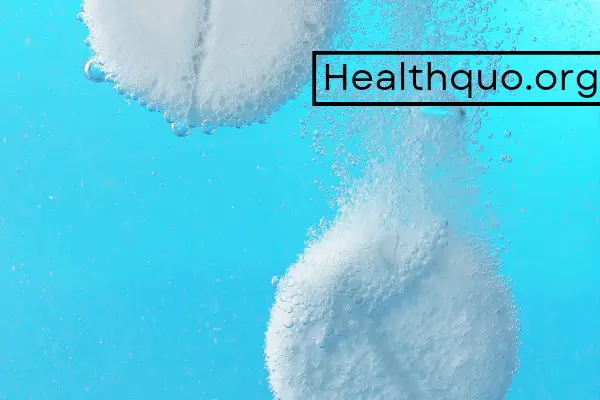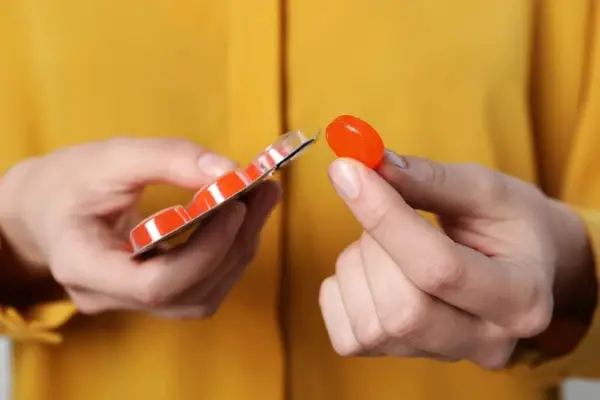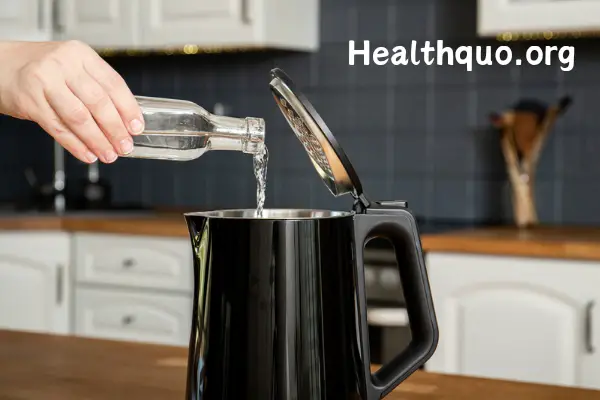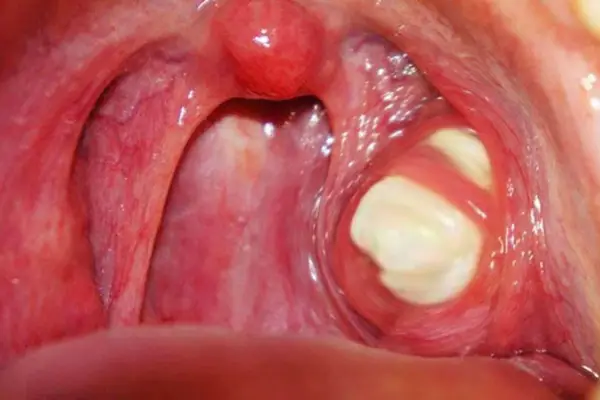Dispersible tablets are a form of medication designed to be easily dissolved in water or another liquid before ingestion, or directly in the mouth. This formulation makes it easier for certain populations, such as young children, the elderly, or anyone who has difficulty swallowing pills, to take their medication.
However, it’s not usual for some consumers to prefer swallowing these tablets, probably to prevent any aftertaste or for the sake of convenience. So, that brings the question—can dispersible tablets be swallowed whole or without dissolution?
Dispersible tablets are fast disintegrating and if stated by the manufacturer, they can be swallowed whole. You still have to be aware of concerns like choking hazards, especially with kids. Besides, swallowing may reduce the efficacy of the drug due to little pre-gastric absorption.
In the stomach, the drug often goes through a first-pass effect reducing the bioavailability before reaching systemic circulation. For orodispersible tablets placing it in the mouth till it dissolves is all that is required.
How Dispersible Tablets Are Made
Dispersible tablets are formulated with active pharmaceutical ingredients (APIs) and various excipients that promote rapid disintegration and dissolution. The manufacturing process often involves wet granulation or direct compression techniques.
The direction compression method involves blending the active pharmaceutical ingredient (API) and excipients, after which they are directly compressed into tablets. This method is efficient and cost-effective but requires that the raw materials have good flow and compression characteristics.
In cases where the API or excipients do not possess suitable properties for direct compression, wet granulation may be used. This process involves mixing the API with excipients and a granulating fluid to form a wet mass.
The wet mass is then dried and milled into granules, which are subsequently compressed into tablets. Wet granulation can improve the uniformity of the API distribution, the compressibility of the mixture, and the disintegration and dissolution properties of the final product.
Key excipients include super disintegrants (e.g., sodium starch glycolate, croscarmellose sodium, and crospovidone), fillers (e.g., lactose, microcrystalline cellulose), binders (e.g., polyvinylpyrrolidone (PVP) and hydroxypropyl cellulose), lubricants (e.g., magnesium stearate), and sometimes flavoring agents to improve taste.
These ingredients are meticulously chosen to ensure the tablet dissolves quickly and completely in liquid, creating a suspension that can be easily swallowed.
How Dispersible Tablets Work
Upon contact with liquid, the dispersible tablet begins to disintegrate. This is facilitated by the inclusion of super disintegrants in the tablet’s formulation. Superdisintegrants are substances that absorb water quickly, swelling and expanding to break the tablet apart into smaller granules.
After disintegration, the small particles of the active pharmaceutical ingredient (API) and excipients are suspended in the liquid. This suspension ensures that the medication is evenly distributed throughout the liquid, making it easier to consume the entire dose accurately and effectively.
Once ingested, the liquid suspension facilitates the rapid release and absorption of the API into the bloodstream from the gastrointestinal tract. The quick dissolution of the drug in liquid form, compared to solid form, can lead to a faster onset of therapeutic action. This is particularly advantageous for medications where a quick response is desirable, such as pain relief or antipyretics.
The formulation of dispersible tablets can enhance the bioavailability of the medication.
Can You Just Swallow Dispersible Tablets Whole?
Dispersible tablets can be swallowed whole, particularly if the manufacturer specifies that it is an acceptable method of administration. They are designed to disintegrate quickly in liquid, which can make them easier to swallow for individuals who have difficulty with regular oral tablets.
However, certain medications are formulated as dispersible tablets to enhance their absorption and bioavailability. This is important for drugs that undergo significant first-pass effect, a process where the drug’s concentration is greatly reduced before it reaches systemic circulation.
Moreover, some drugs (such as nitroglycerin and ibuprofen) are available in dispersible form to mitigate the risk of producing toxic metabolites during first-pass metabolism in the liver. For these medications, allowing the tablet to dissolve as intended can be crucial for minimizing the generation of potentially harmful by-products. Swallowing the tablets whole may alter the intended pharmacokinetic profile, potentially increasing the risk of adverse effects.
Choking is an additional concern, especially for children, when swallowing tablets whole. Dispersible tablets mitigate this risk by dissolving quickly in the mouth or in water, creating a solution or suspension that is easier and safer to swallow than a standard oral tablet.
For individuals with a history of esophagitis or other esophageal disorders, allowing a dispersible tablet to dissolve in the mouth before swallowing can prevent irritation to the esophagus caused by the solid tablet.
Drugs That Come In Dispersible Form
Dispersible tablets provide a convenient medication form for various therapeutic areas, including:
Aspirin: Anti-inflammatory and antipyretic, for cardiovascular protection.
Paracetamol: Pain relief and fever reduction.
Amoxicillin: Antibiotic for bacterial infections.
Ondansetron: Antiemetic for nausea and vomiting prevention.
Enalapril: Antihypertensive for blood pressure and heart failure management.
Zinc Sulfate: Nutritional supplement for zinc deficiency and diarrhea treatment.
The Purpose Of Dispersible Tablets
The primary purpose of dispersible tablets is to simplify the process of medication administration for individuals who experience difficulty swallowing solid dosage forms, such as traditional tablets or capsules. This challenge is commonly encountered among specific demographic groups, including young children, the elderly, and individuals suffering from dysphagia (a condition characterized by difficulty swallowing).
The issue of palatability is also addressed by dispersible tablets. When dissolved in water or another suitable liquid, these tablets create a suspension that can be easily swallowed, reducing the risk of esophageal irritation or choking and ensuring that the patient receives the correct dosage of medication.
Moreover, dispersible tablets are designed to enhance patient compliance with their treatment regimen. The ease of administration, coupled with the often pleasant or neutral taste of the resulting suspension, increases the likelihood that patients will adhere to their prescribed medication schedules. This is particularly significant in pediatric and geriatric patient populations, where resistance to taking medication can pose a substantial barrier to effective treatment.
Another important purpose of dispersible tablets is to provide rapid medication action. Because the active pharmaceutical ingredient is dispersed in liquid form, it can be absorbed more quickly by the body compared to solid dosage forms that require disintegration in the digestive system before the drug can be absorbed. This feature is especially beneficial for medications that need to take effect quickly to relieve symptoms or address acute health conditions.
Dispersible tablets offer a versatile medication delivery option that can be advantageous in various scenarios, such as when access to water or other liquids is limited or when an individual must take medication without the convenience of traditional pill-swallowing methods.
Pros And Cons Of Dispersible Tablets
Pros and Cons of Dispersible Tablets
Pros:
Enhanced Patient Compliance: Easier to take than solid tablets, especially for children and elderly patients.
Improved Bioavailability: The pregastric absorption of some medications in dispersible tablet form can enhance bioavailability, leading to more efficient drug utilization.
Lower Risk Of Asphyxiation: Particularly in pediatric cases, dispersible tablets minimize the choking hazard, offering a safer alternative for medication administration.
Quicker Onset of Action: The rapid breakdown and absorption of dispersible tablets facilitate a faster response, beneficial for acute symptom relief.
Versatile Usage: This can be taken with a small amount of water, making it convenient for use when traveling or in situations where swallowing solid forms is challenging.
Cons:
Stability Issues: Some dispersible tablets may be more sensitive to moisture and require special packaging.
Taste Issues: The more pronounced flavor of the active ingredient in some dispersible tablets can be off-putting, potentially affecting patient willingness to take the medication.
Increased Production Costs: They can be more expensive to manufacture than traditional tablets, potentially leading to higher costs for consumers.
Contraindications For The Use Of Dispersible Tablets
Contraindications for the use of dispersible tablets include certain patient conditions and drug characteristics that may limit their appropriateness:
Patients on Anticholinergic Medications: These drugs reduce saliva production, potentially hindering the proper dissolution of dispersible tablets.
Sustained-Release Drugs: The quick disintegration of dispersible tablets contradicts the intended prolonged release of active ingredients in sustained-release formulations.
Patients with Reduced Saliva Production: Conditions like Sjögren’s syndrome, which decreases saliva output, can affect the dissolution and effectiveness of dispersible tablets.
Drugs Intended for Local GI Action: Dispersible tablets may not be suitable for medications designed to work directly in the gas.





